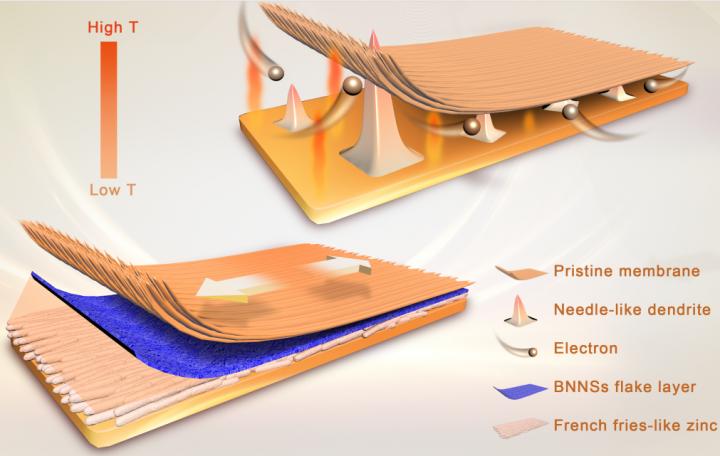Researchers led by Professor LI Xianfeng from the Dalian Institute of Chemical Physics (DICP) of the Chinese Academy of Sciences recently developed a composite membrane for long-life zinc-based flow batteries. Their study was published in Angewandte Chemie International Edition.
The zinc-based flow battery (ZFB) has captured much attention as a stationary energy storage application due to its low cost, intrinsic high safety and environmental friendliness. However, its development is limited by poor cycle life and poor charge-discharge performance, mainly due to zinc dendrite/accumulation issues.

Ion-conducting membranes play an important role in regulating the morphology of zinc deposition and inhibiting the growth of dendrites, thereby improving the cycling stability of the battery.
In the early stage of their research, LI’s group adjusted the direction and morphology of zinc deposition by modulating the negative charge properties of the porous ion-conducting membrane, thus improving the area capacity and cycling stability of zinc-based flow batteries.
Based on their previous work, the researchers then developed a composite membrane by coating boron nitride nanosheets (BNNSs) exhibiting high thermal conductivity and mechanical strength onto a porous membrane substrate.
The BNNSs flake layer facing the negative electrode serves as the heat-porter, thus improving the surface temperature distribution of the electrode and further adjusting the zinc morphology. Moreover, its high level of mechanical strength prevents the metallic zinc from damaging the membrane.
The synergistic effect of these two factors can improve the cycle life of ZFBs. Alkaline zinc-iron flow batteries assembled with this membrane can stably run for 500 charge-discharge cycles (~800 h) at a current density of 80 mA cm-2 without significant attenuation.
Most importantly, energy efficiency above 80% can be obtained even at 200 mA cm-2. These results may serve as a reference for the regulation of zinc anodes in zinc-based batteries.
Research article available at: J. Hu, et al. Agewandte Chemie International Edition, 2020, doi.org/10.1002/anie.201914819

















